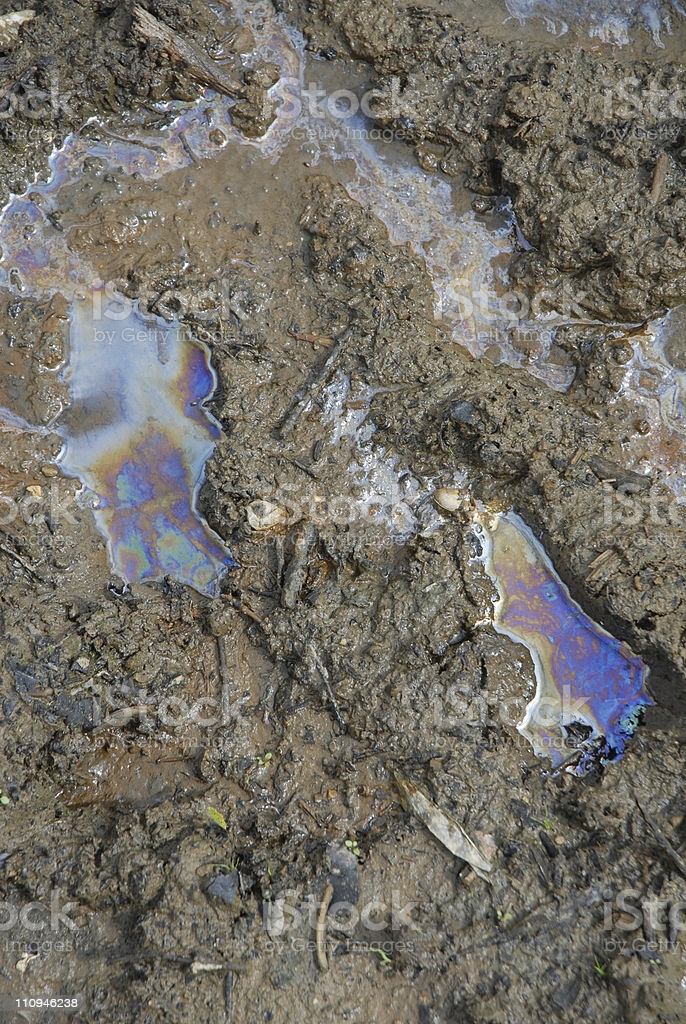Oil/water reaction
By looking at samples of the soil in an oilpan, where the contaminated soil lies in a small layer of water, a film of oil can be seen if the soil is contaminated. The thickness of this film and the location (on the water or in the water) defines if the soil has a high oil-water reaction or a low oil-water reaction.
Characteristics
By looking at samples of the soil in an oilpan, where the contaminated soil lies in a small layer of water, a film of oil can be seen if the soil is contaminated. The thickness of this film and the location (on the water or in the water) defines if the soil has a high oil-water reaction or a low oil-water reaction. To define the presence of oil in the soil some filters need to be placed at the source of contamination. This filters need to be placed with a part above the groundwater table and a part below the groundwater table. Oil in its purest form mostly appears close to the capillary zone, the interface between saturated and unsaturated area. If an floating layer of oil is found in the filter, analyzing the soil sample is not recommendable, because the values are around the maximum solubility of the oil product.
Oil film
| Class | In the field |
|---|---|
| Extreme oil-water reaction | Oil spots which cover 75-100% of the surface. |
| Strong oil-water reaction | Oil spots which cover 30-75% of the surface. |
| Moderate oil-water reaction | Some oil stripes or oil spots (maximum 30% of the surface) |
| Poor oil-water reaction | Oil trails with 3 to 5 small oil spots or stripe (1-10cm2) |
| No oil-water reaction | Maximum of two small oil spots (<1 cm2) |
